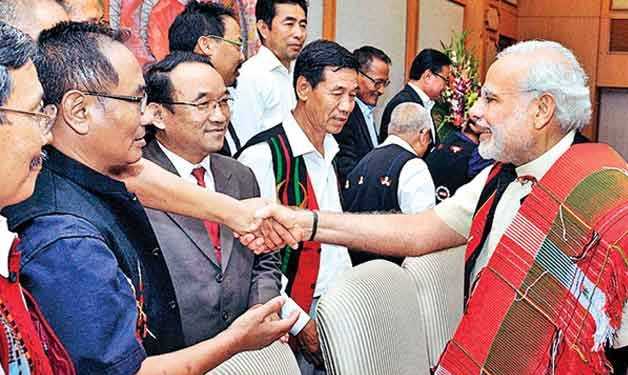The North Eastern part of the country is a kaleidoscope of cultures, languages, religions and races. History, however has not been kind to it. Wracked with strife and violence, the fruits of development and progress are yet to reach it. Tucked away from the Media spotlight that focuses on Delhi and its environs, North East is a forgotten land where exquisite beauty meets heart wrenching sorrow. From violence in the name of secessionism to carnage in the name of ethnicity, from territorial disputes to communal violence, North East is in someways a veritable tinderbox.
One step towards making the North East a safer place to live seemed to have been made in 2015, when the Modi government announced that it had signed the Naga peace accord with the NSCN, thereby bringing down the curtains on the one of the region’s longest running insurgencies. But nearly two years later, almost everybody seems to be in the dark on the contents of the accord that were signed.
Politically speaking, much water has flown down the Brahmaputra since 2015. Unlike back then, the BJP now leads the government in Assam, Manipur, Arunachal Pradesh and even Nagaland, either itself or through local allies. And yet, the ‘historic’ accord that was signed in 2015 is still awaiting operationalization. In fact, details of the accord are still wrapped in mystery.
Half a century of strife:
From outright rejection of Indian sovereignty over Nagaland to accepting statehood and working within the Indian constitution, Nagaland has come a long way. However, insurgents have held sway over large parts of the state and Naga dominated areas of neighbouring states, resulting in violence and bloodshed. One sore point that has perennially rankled non-Nagas is the demand for a Greater Nagaland. The so called Greater Nagaland claims for itself, in addition to the whole of Nagaland, districts from Manipur, Assam and Arunachal Pradesh as also territories in neighbouring Myanmar. Understandably, the Non-Naga states refuse to accept any kind of territorial adjustment to appease to Naga sentiments. Naga secessionists have frequently reiterated their demand for a Greater Nagaland including territories in Manipur, Assam and Arunachal Pradesh provoking anger and violence. In fact, NSCN leader Thuingelang Muivah who signed the ‘Framework agreement’, a.k.a Naga Peace Accord, claimed recently that the accord recognizes Nagas’ right to integration of all Naga territories, a claim that was swiftly denied by the Central government.
Who is a Naga?
There is a fair bit of controversy on who exactly is a Naga. While favoured as an ethnic exonym, Nagas are hopelessly divided amongst themselves. There are several tribes who are pitted against each other. Additionally, ‘Nagas’ occupy territories cutting across regional and national borders, thereby complicating what is already a complex issue. For instance, the secessionist NCSN (IM) draws its strength from the Naga dominated areas of Manipur, while the NSCN (K), whose cadres hail from the Naga dominated areas of Arunachal. The NSCN (K) has frequently labelled the NSCN (IM) as ‘Tangkhul’ (a Naga ethnicity in Manipur), thereby denying them the Naga status. Then there are the Zeliongrang Nagas, Konyak Nagas and many others, whose loyalties typically do not extend beyond their own tribes. The absence of a strong, cohesive and coherent Naga identity complicates an already thorny issue.
In fact, many Nagas in Nagaland were less upbeat about the Peace Accord signed in 2015, claiming that the ‘Nagas of Nagaland should not be disturbed because they have their own political and social structure’.
Another Naga secessionist group derided Muivah as a ‘Naga from Manipur’, who was speaking for his people in the aftermath of the Peace Accord.
Central government’s role:
Central government’s role in the entire Naga-muddle is suspect. From claiming to have cracked the deal with insurgents in 2015, to being tight lipped about the pact, the Central Government seems to have messed up matters. There were reports in the media that the Central government’s interlocutor had over-estimated the strength of the insurgents and had then overpromised to the insurgents. The fact that details of the accord haven’t gone public hasn’t helped the Public trust the Central government’s intentions. Only a couple of days ago, Muivah, once again claimed that Greater Nagaland was very much in the pipeline and all that the Central government could do was issue a weak denial. Rumours fly in the absence of clarity. Lok Sabha witnessed commotion when BJP MP from Tezpur seemingly attacked his own government over Muivah’s statement. Ram Prasad Sarmah made it clear that Greater Nagaland can never find acceptance in the states bordering Nagaland. In fact, he went a step further demanding that territories in Nagaland be returned to Assam and historical wrongs corrected.


































